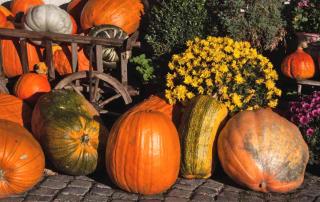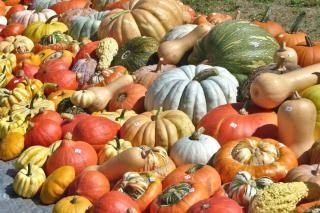

Easy to grow in the vegetable patch, Cucurbitaceae squash come in a great variety of fruits which we can savor from summer’s end to the beginning of spring.
Butternut, spaghetti squash and moschata squash, maxima squash, red kuri squash, sweet dumpling… Squash exist in a huge variety of shapes, colors, tastes and sizes.
Prepare them mashed, in soups, baked, and sweeter ones (like butternut, red kuri squash, and sweet dumpling that tastes like chestnuts) can simply be roasted in an oven with a dash of oil and gourmet fleur de sel salt.
Fiber-rich, low-calorie and stock full of vitamins, these squash can be eaten in fall and in winter, because they keep very well for the entire cold season.

Seedlings are best started in April indoors. Place your nursery pots near a source of heat: sow one or two seeds per pot in soil mix. After one month, transplant your young seedlings to the garden, spacing them one or two yards (meters) apart, depending on the variety.
Snails and slugs consider these choice morsels, so protect them with a ring of ashes that you must renew after each and every rainfall.

Mulch the foot of your plants thickly, at least 8 inches (20 cm), and water once a week in summer if the weather is dry, without wetting the leaves.
Squash harvest is at the beginning of fall, when the first frost spells hit. Squash harvested at the end of fall can keep for several months in a dry room with a room temperature between 50 and 70°F (10 to 20°C).
Laure Hamann